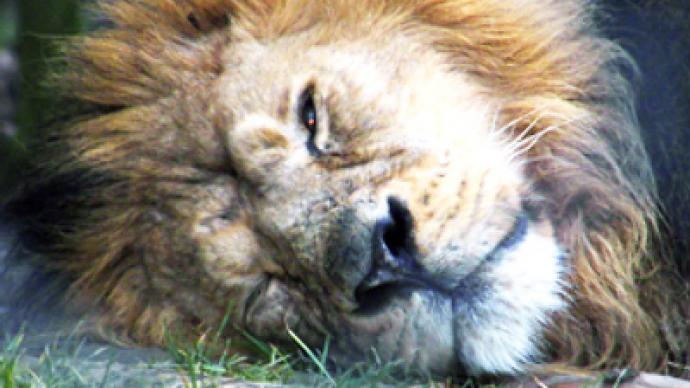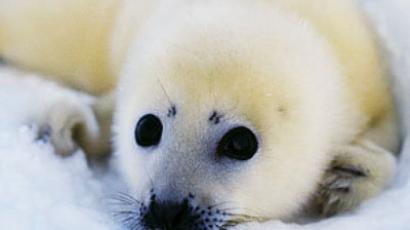“Tormenting” tourism takes its toll on wildlife

Perplexed and tormented feral creatures slinking about in mock habitats have anguished advocators of the industry for years, but is the public’s growing love affair for meddling with wildlife driving animals to despair?
The wilder and “eviler” the lion looks the more contented the crowd is, but relentless prying eyes on animals that have been forced from the wild are – according to researchers – inadvertently being driven wild, destroyed by human’s egotistic urges. Acts solely for the purposes of gratification and pleasure like swimming with sharks, paddling with penguins and diving with dolphins are supposed to be one of the ultimate feelings of freedom and expression – for humans at least. Man’s selfish curiosity is slowly killing the world’s wildlife.
A young boy teasing a penguin from behind a metal meshed barrier at a zoo is a common scene throughout the world, but according to a unique study investigating the physiology of creatures involved in such tourism, exposure to humans is proving detrimental to wildlife worldwide.
The main focus of the study, which was led by the Simon Fraser University in Canada, concentrated on the affects human contact had on stingrays at Stingray City. The research uncovered that the creatures were in poorer health, with lower levels of immunity than if they had been left to their own devices in the wild. According to Christina Semeniuk a leading ecologist at Simon Fraser University:
“Our study is the first to definitely show negative physiological impacts that indicate long-term costs to the animals’ health. The implications of these findings will not only affect the wildlife. Reduced stingray numbers or injured, unhealthy looking stingrays can cause the visitor site to become less attractive and may cause a decline in tourist numbers and have an economic impact.”
As such, a reduction in the numbers of tourists visiting attractions like zoos and aquariums has been met with approval by wildlife tourism advocators, and naturally the findings have sparked a renewed attack of denigration by critics of animal captivity.
Courtney Vail, of the Whale and Dolphin Conservation Society is amongst those reproachful of animal tourism and blames the industry for the way creatures like dolphins are treated in the wild. Vail commented:
“You get people trying to ride on dolphin’s backs and holding on to the dorsal fin. They are trying to recreate the Sea World experience with wild dolphins.”
The World Day for Captive Dolphins took place on July 4 this year and in support of the movement a coalition of European animal welfare organizations launched a campaign aimed at preventing dolphins in captivity from enduring further suffering. According to the ten European and international animal welfare and conservation groups that make up the Alliance to End Dolphins in Captivity Alliance (EAEDC):
“Scientific evidence shows that marine mammals such as dolphins and whales suffer significantly in captive environments because they fail to provide for their behavioral or physiological needs. Compared to their natural ocean home, tanks are small and cramped, bare and featureless, causing stress, aggression, reduced life expectancy and breeding problems.”
The Alliance’s aim is to persuade the EU to stop any new “dolphinaria” attractions from being built by 2010, as they believe such places provide entertainment for humans at the cost of the dolphins’ happiness. Joanna Toole from the World Society for the Protection of Animals said:
“A lifetime in a concrete tank, swimming in circles can never be an acceptable substitute for the vast ocean. Members of the Alliance hope that if the EU can commit to preventing new facilities being built, we will be one step closer to seeing these underwater prisons disappear for good.”
Another breakthrough study in the pursuit to conserve animals in their natural habitat was recent research undertaken by a group of US conservationists studying the behavior of elephants living in different environments. The team exposed evidence of the inabilities of zoos and concluded that elephants that live in confined conditions have much lower mortality rates than those living in the wild – up to three times longer. A spokesperson involved in the study commented:
“All animals in zoos are sentient living beings, put on display to amuse day trippers. They suffer, they die young, and captive breeding is a dangerous distraction from the real conservation of protecting different habitats. It is about time we recognized zoos for the failures they are and started to phase them out.”
It is not just the US that has recently identified the negative impacts of elephants living in artificial environs. An examination published by DEFRA studied all elephants living in zoos throughout the United Kingdom and revealed some shocking statistics. According to DEFRA:
“There is welfare concern for every elephant in the UK and 54% showed behavior problems.”
An earlier study carried out across Europe concluded similar atrocities that animals in European zoos endure rough treatment from keepers, poor diet, illnesses, inappropriate groupings and deficient enclosures.
Not everybody is so quick to contest the welfare of captured animals and captivity is often presented as a beneficial alternative to the dangers of the wild. The main thrust of this argument is that captivity reduces the risk of animals being hunted by others, maximizes survival and therefore prolongs the life of creatures and reduces the chances of species becoming extinct.
Vincent Janik, of the sea mammal research unit at St. Andrews University is of this persuasion, believing wildlife tourism is important for the future existence of animals. He said:
“If the tourists aren’t there then these animals could just be hunted or eaten. The best way is to educate the operators and the customers. Many of the negative effects of wildlife tourism are likely to be restricted to local populations of animals.”
Barbara Mead, a zookeeper in the UK, believes people are too quick to condemn zoos for being “inhumane” when in reality they are providing a safe environment for animals which otherwise would be in jeopardy.
“Zoos and other animal attraction centers are safe, practical and for the majority of the time allow wildlife to develop and thrive. Any alternatives disapprovers suggest are nearly always unrealistic and full of flaws.”
The ethics surrounding zoos and animals held in captivity will always be a hotly-contested subject, but with new research publicly establishing wildlife tourism as having devastating consequences on animals, the captivity abolitionists’ aspirations to put an end to enclosures grows closer.
Gabrielle Pickard for RT













